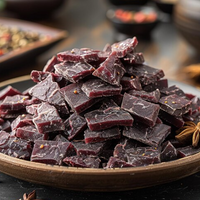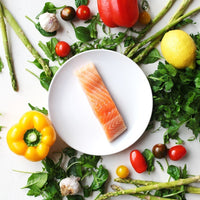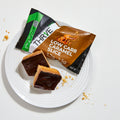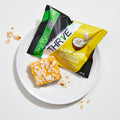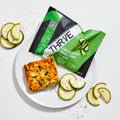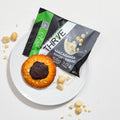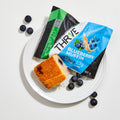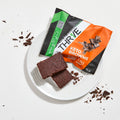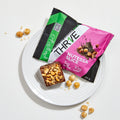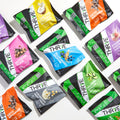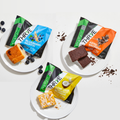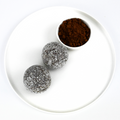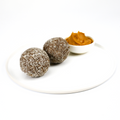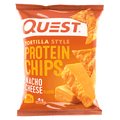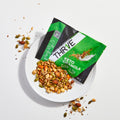In this new blog series, THR1VE Founder and CEO Josh Sparks discusses some of the biggest myths around diet and exercise. First up: that eating less is the only way to lose weight.
 Most fad diets are based on the simplistic idea that if you eat less calories than you burn each day, then you will lose weight.
Most fad diets are based on the simplistic idea that if you eat less calories than you burn each day, then you will lose weight. Depending on whatever the point of difference of the ‘diet’ is meant to be – i.e. the calorie deficit may derive from dramatically smaller portions or fewer meals, the elimination of one or more kinds of food groups, or even the exclusive consumption of one kind of food for a period of time – the supposed secret sauce of the intervention is largely based on a reduction in calories compared to whatever you were eating previously.
This will work to reduce weight, albeit temporarily and unsustainably, with potentially long term damage to your metabolism.
Beware the ‘yo yo’ effect
A dramatic reduction in energy intake can create a bunch of unintended and undesirable consequences. The ‘weight’ you lose will often be composed of as much muscle and water as excess body fat, the body will quickly adjust to the reduced energy intake by slowing your metabolism and you will end the ‘diet’ (every diet ends… unlike a healthy lifestyle shift) with a lowered metabolic rate, meaning you will put weight back on again at least as fast as you lost of it. This is commonly known as the dreaded ‘yo yo’ effect, that any old-school dieter will be all too familiar with.In fact, multiple studies have shown that calorie-controlled diets lead to very different results, based on whether the bulk of calories come from fat, protein or carbohydrates. Interestingly, and contrary to the conventional wisdom, low fat/carbohydrate-heavy diets fared the worst of all. All calories are not equal, despite the comprehensively debunked but reassuring simplicity of the calories in/calories out mantra.
Where your calories come from, from a macronutrient perspective, matters enormously. Indeed, it is possible to significantly reduce body fat without reducing overall calories, if the ratios are shifted to quality proteins and healthy fats while minimising carbohydrates, and eliminating processed foods.
But calories do matter, to some degree
Not to confuse things, but equally, it’s not true to say that calories don’t matter at all – they do.Even a perfectly designed plate of real foods, rich in veggies, salad greens, and high quality protein, will struggle to support your body composition goals if it is the size of your head and consumed all day long.
So what’s the balance for simple, sustainable and health-promoting weight loss? First of all, adjust your carb intake. Think of whole food, low GI and high fibre carbs (like starchy veggies, legumes or rice) as supporting your recovery from training. You simply don’t need carbohydrates at every meal, they are the only non-essential macronutrient, but they can be used in a smart way after exercise. The post-exercise window, up to three hours after intense exercise, directs the carbs towards muscular repair and recovery, and metabolic and endocrine support, not excess body fat. So keep your meals plant-rich, complemented by high quality proteins, adding carbs only after exercise sessions.
Secondly, if you want to maximise fat loss, a slight overall calorie deficit is necessary. You can weigh, measure and count calories if you’re so inclined, but a simpler way is tuning into your hunger. After eliminating the processed foods and added sugars that play havoc with your appetite and hunger signalling, your body will regain its miraculous ability to signal when and how much to eat. So eat when your body is telling you to and stop when no longer hungry, NOT when you’re full. There is a big difference.
A two pronged approach – manipulating carb intake with a focus on quality over quantity, and eating until satisfied not until full – provides the double benefit of the best of the emerging science on the impact of consuming different and higher quality macronutrients at different times, with the tried-and-tested technique of creating a slight calorie deficiency.
It is this principle which underlies our THR1VE Protocol 8-Week transformation program, which you can read about here.
Plate design for guaranteed success
Plate design should be your choice of 1/3 quality protein (approx the size of your palm) and 2/3 non-starchy vegetables and salad greens (approx 2-3 times the size of your fist). Include whole food, low GI and high fibre carbs in your post-training meals. Exploit the wonderfully satiating and delicious qualities of healthy fats, high quality proteins and high-fibre vegetables. They all make you feel fuller, for longer, while being super nutrient dense.Combine this with a conscious effort on your part to get reacquainted with ‘hunger signalling’. Most people are so out of touch with hunger signalling they mistake thirst for hunger. Try drinking some water first and see how you feel in ten minutes, and when you eat, stop when no longer hungry.
Being smart about your plate design and tuning into hunger signalling will lead to an effortless and sustainable calorie deficit, while providing all the micronutrients you need to look great and feel amazing. Ultimately, sensibly eating 100% real food will truly set you up for success and eliminate time-consuming calorie counting!

